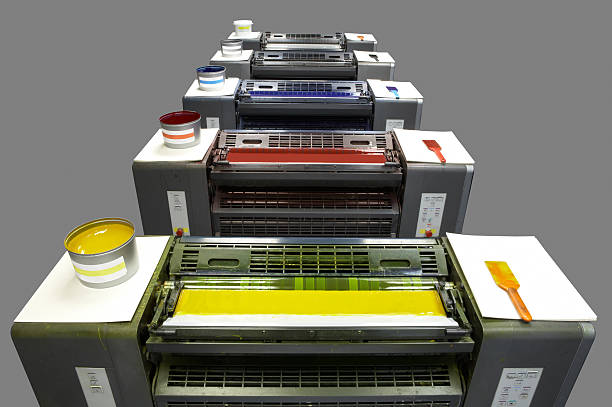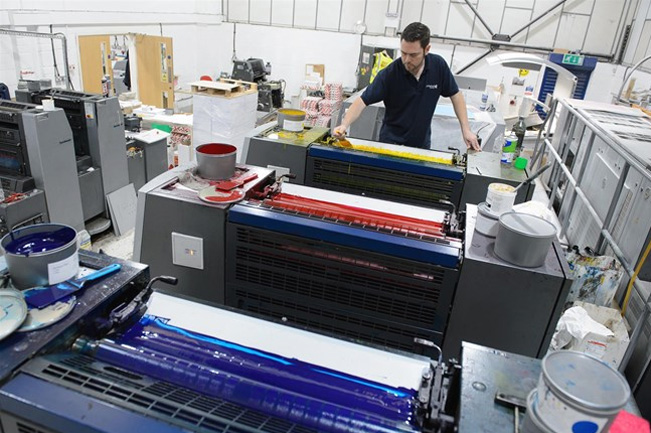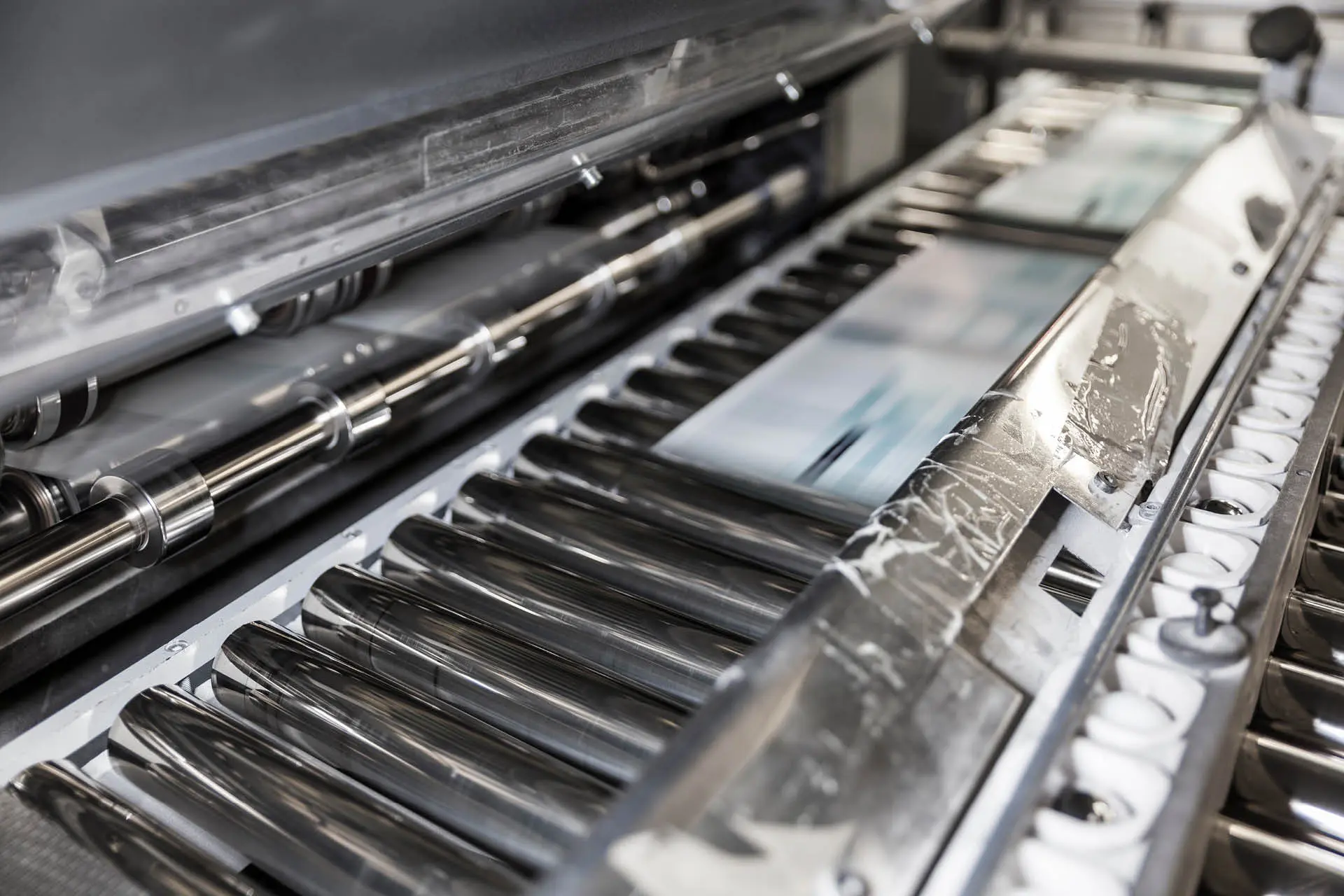litho printing Services with Quick Turnaround Times
Wiki Article
A Comprehensive Guide to Comprehending Litho Printing Strategies
The globe of litho printing, a method stemming from the late 18th century, is a fascinating blend of background, science, technology and art. This thorough overview will unwind the intricacies of this printing approach, from the make-up of litho inks to the difficulties encountered in modern applications. As we venture into the details of lithography, the value of automation and sustainability in ensuring its future importance comes to be progressively clear. Stay with us as we journey right into the fascinating world of litho printing.The Historical Development of Litho Printing
The historic trajectory of litho printing, a critical development in the realm of communication, is a fascinating story of human resourcefulness. The process evolved with the arrival of the rotary press, which substantially increased productivity. Each phase of litho printing's advancement showcases humanity's relentless search of effectiveness and top quality in aesthetic communication.Deciphering the Scientific Research Behind Litho Printing Inks
Moving on in the exploration of litho printing techniques, the focus currently shifts to the scientific research behind litho printing inks. The make-up of these inks, their drying procedure, and color mixing methods create the backbone of this intricate art type. Recognizing these elements is critical to grasping the craft and achieving the wanted print results.Make-up of Litho Inks
In lithographic printing, the essential role of litho inks can not be overemphasized. The make-up of litho inks differs relying on its function, yet usually, they include two primary components - pigments and lorries. Pigments, the color-providing elements, are carefully ground fragments suspended in the car, a liquid that lugs the pigment onto the printing surface area. The lorry is a complex blend of oils, materials, and solvents, which affect the ink's drying out time, adhesion, and gloss. Furthermore, numerous additives exist to boost certain residential properties like flow, drying, and resistance to ecological effects. Each element plays an essential component in the last print's quality, making the exact formulation of litho inks a complex scientific research.Ink Drying Process
From the make-up of litho inks, attention turns to the remarkable procedure of ink drying. The drying out process is important, as it affects the final print's quality and durability. 2 primary methods are used in litho printing: oxidative drying and absorption. Oxidative drying out includes the ink reacting with oxygen in the air to create a difficult, completely dry film. This technique supplies a durable surface, but can be slower compared to absorption. Absorption, on the other hand, involves the ink seeping into the paper fibers, which is a faster procedure yet can cause much less lively colors. The choice between these methods depends on variables such as print rate requirements, the paper type used, and the desired surface.Color Combining Methods
While the drying procedure plays a crucial role in litho printing, the scientific research of shade blending techniques holds equivalent relevance. This is an intricate procedure that involves the mindful mixing of primaries: cyan, magenta, and yellow, in varying proportions to attain a large range of hues. The enhancement of black ink, understood as 'key', aids in controling the intensity and deepness of the colors. The scientific research behind litho printing inks likewise takes into account the transparency of the ink, which impacts exactly how shades overlay and mix. To accomplish a reliable shade mix, print specialists have to additionally comprehend the ins and outs of ink behavior, shade concept, and the physical residential properties of the substratum on which the ink is applied.The Art and Layout Elements in Litho Printing
Litho printing takes a breath life into art and layout through its special elements. The procedure entails creating a photo on a lithographic limestone plate or metal plate with a smooth surface area. The photo is after that published onto a tool, typically paper, by moving the ink from home plate. What sets litho printing apart is its ability to duplicate detailed styles with high fidelity, making the result virtually identical to the original artwork. This is achieved through making use of different line techniques such as cross-hatching, hatching, and stippling, which enable for an array of tonal results. Litho printing suits a selection of shades, making it possible for musicians to create dynamic and lively prints. This mix of precision and flexibility makes litho printing a preferred choice for many artists and designers.Modern Applications of Litho Printing Techniques
Litho printing methods have found considerable usage in the modern industrial industry. Its impact and importance remain to expand with the introduction of brand-new advancements Our site and technologies in the field. This section will check out these contemporary applications and the transformative duty they play in the printing market.
Commercial Litho Printing Makes Use Of
Litho printing remains a crucial component of the industrial market. High-volume printing tasks, such as the manufacturing of books, papers, and product packaging, count on litho printing for its capacity to supply superior photo quality and cost efficiency. Litho printing also provides a broad shade spectrum, premium to that of electronic printing.Innovations in Litho Printing
Pressing the boundaries of standard techniques, modern advancements have sustained a host of innovations in litho printing. These developments have not just enhanced the high quality and performance of litho prints but additionally increased its application range. One famous development is electronic litho printing, which incorporates the merits of digital modern technology with litho's high-grade result. This hybrid model supplies faster arrangement times, lowered waste, and enables on-demand printing. An additional remarkable innovation is the introduction of eco-friendly inks. These inks, made from veggie or soy-based solutions, have actually substantially minimized the industry's ecological effect. litho printing. Additionally, the advancement of advanced plate modern technology has streamlined the printing procedure, leading to sharper pictures and improved color integrity. These developments underscore the long-lasting significance of litho printing in the modern world.Discovering the Process of Litho Printing: Detailed

Obstacles and Solutions in Contemporary Litho Printing

Regardless of the precision and custom that litho printing proudly upholds, it is not without its set of modern difficulties. Digital litho printing permits for cost-effective short runs and easy personalization, dealing with the problem of variable data. Thus, while there are challenges, the litho printing industry is proactively adapting to fulfill them head-on, guaranteeing its importance in the future.
Verdict
In verdict, litho printing, with its abundant background and scientific complexities, holds a considerable place in the print industry. As the guide discloses, it's a synthesis of art and technology, with modern-day developments ensuring its importance. The sector deals with challenges that call for ingenious services, with a focus on automation and sustainability. The future of litho printing depends upon its capacity to adapt to these changing needs, attesting its long-lasting value in an evolving market.
Report this wiki page